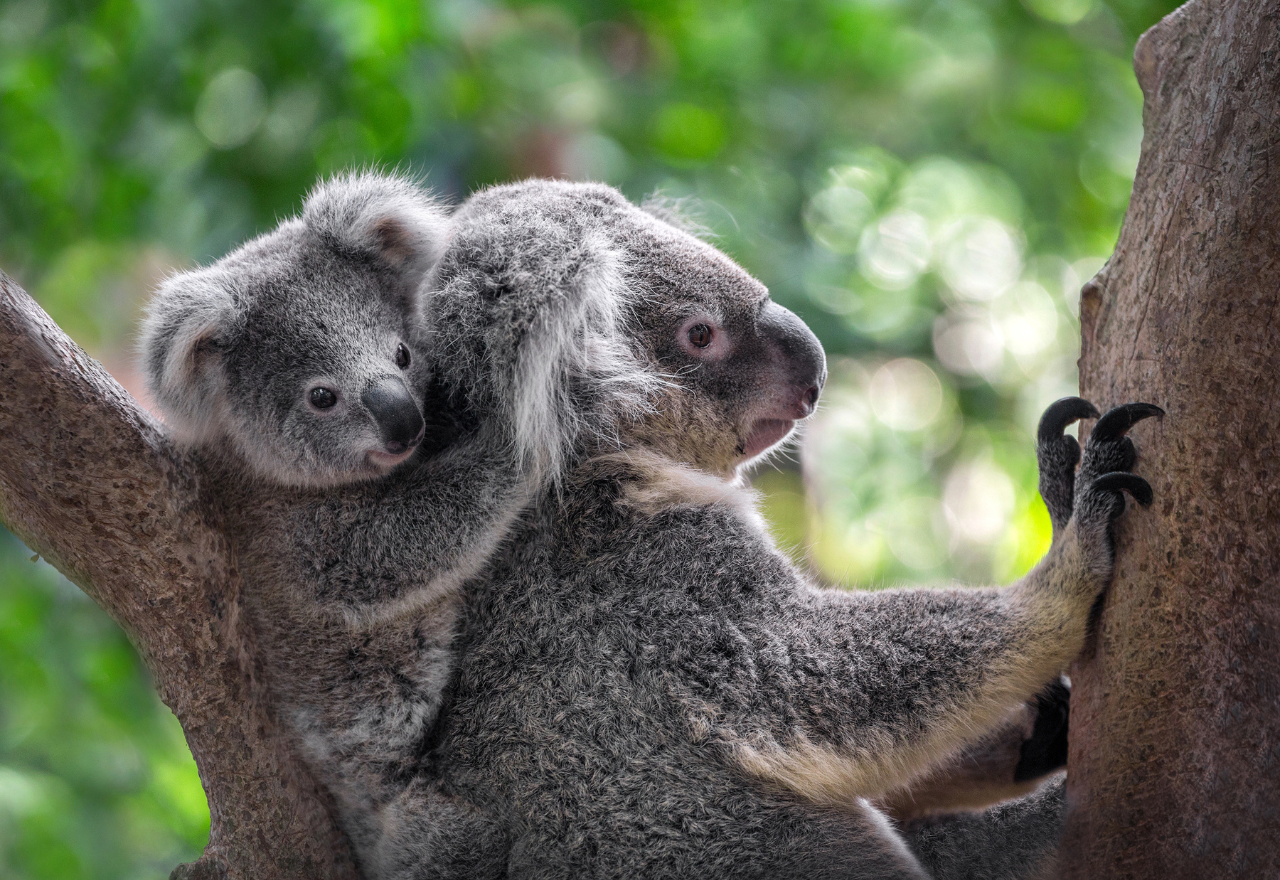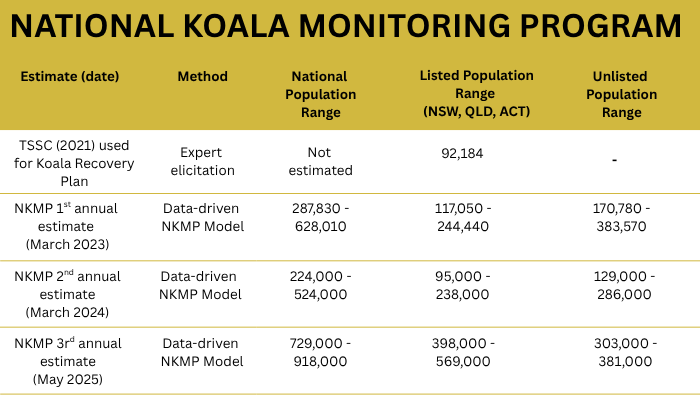Koala count 4 times higher than first estimated in NSW/QLD/ACT
Simon Mumford
30 October 2025, 7:01 PM

There was good news for the koala population in NSW, ACT and Queensland this week after the latest CSIRO National Koala Monitoring Program (NKMP) numbers were finally released, following a five-month delay.
The $10 million NKMP project is being delivered by the CSIRO. Year 3 data showed koala numbers four (4) times higher than previously estimated.
The latest data-driven estimate for the size of the listed (NSW, ACT, QLD) koala population is between 398,000 and 569,000.
This estimate is substantially greater than previous NKMP estimates, arising from the incorporation of additional data from across a wider area and model improvements. The NKMP project also recruited the community to help with physically spotting and recording koala sightings.
For clarification, these numbers are not necessarily an increase in the koala population, but a more accurate method of counting koalas through increased survey efforts.
To give some perspective, the expert estimate in 2022 was that there were only 92,184 koalas in NSW, ACT and Queensland, with no national population estimate. The estimate was clearly on the low side.
Three years later, there are more koalas nationally as well as in NSW, ACT and QLD.

The latest population estimate for the unlisted koala population (VIC, SA) is between 303,000 and 381,000 individuals.
This is also higher than previous NKMP estimates and varies for the same reasons as the listed population.
The koala (combined populations of Queensland, New South Wales and the Australian Capital Territory) was listed as endangered on 12 February 2022 by the now leader of the Federal Opposition, Susan Ley, when she was Minister for the Environment. The reason was because of drastically declining koala numbers, 180,000 along the east coast.
Will the 'endangered species' be removed or downgraded to 'vulnerable'?
A NSW Government spokesperson said, "This is good news for koalas, but they are still listed as endangered in NSW and remain under threat from habitat loss, climate change, disease, car strike and dog attacks.
"The Great Koala National Park will protect one of the state’s most significant and healthy koala populations. But it’s also home to more than 100 threatened species, which are now protected."
Clancy Barnard, Senior Forest Campaigner, Nature Conservation Council of NSW, said, "It’s great that CSIRO has secured proper funding and delivered a more accurate baseline for koala numbers. For the first time, we have a scientifically rigorous national estimate, and that’s worth celebrating.
"The listing of koalas in NSW, ACT and QLD as endangered remains in place, and the species continues to face serious threats across their range, with habitat loss, logging and clearing major risks.
"That’s why it’s critical that we continue to fight for the protection of key koalas' habitat from logging and habitat clearing. Both see the removal of the mature feed trees they rely on, destruction of the canopy connections they use to move safely, and fragmentation of their habitat, leaving them exposed to heat, dogs and cars."
The East Lismore-based group, Friends of the Koala, was contacted for comment, but no response was received at the time of writing.
The NKMP model will include data from the NSW Government, collected as part of efforts to collect baseline data on koala populations across the state, in the future. The next population update is anticipated to include more NSW data to help improve the confidence bounds of the estimate.
These population estimates will provide a post-2022 listing baseline. The intention of the NKMP is to establish consistent data-driven modelling that will be able to track population trajectories over time.
The next national koala population estimates are due in mid-2026. The intention is to provide population estimates at the regional level where sufficient data are available. Interim updates may also be released where appropriate.

